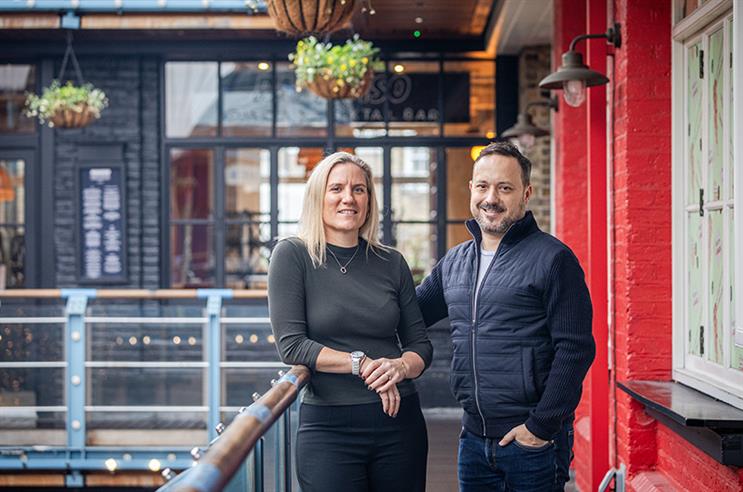
When the going gets tough, brands spend more on outdoor. It’s true today but you’d be right to be surprised.
In the past, harsh and uncertain economic climates led to a contraction of ad budgets. Now, however, brands are making different choices about where they invest and out-of-home has increasingly been offering marketers more of what’s important to them.
An increasing number of brand owners now view using OOH as “the right” choice, as well as “the responsible” one, says Clear Channel UK’s UK sales director Mark Smith. And, he asks: could this be a sign that marketing - via OOH at least - is now finally being seen by the c-suite as an investment rather than simply a cost?
“All media channels faced challenges in 2023,” says Aimee McKay, Clear Channel UK’s client partnership director. “But OOH bucked the trend of past recessions when everyone pulled back. Brands really leaned into the channel and were aware of the importance of being highly visible.”
In the third quarter of 2023, spend on out of home was up 5% year on year (Outsmart 2023). Meanwhile, the Advertising Association / WARC Expenditure report published in January predicts OOH is set for 8.7% annual growth for the full year.
There are a number of reasons for this, the most obvious being outdoor’s best-known strengths: its scale and reach, its creative opportunities and the flexibility powered by digital and programmatic, all while being responsible.
But other factors have been especially pertinent during the cost-of-living crisis of the past 12 months.
Redefining OOH’s role
In contrast to previous recessions, many brands are using OOH this time to communicate value, attract light category buyers and protect share.
Consumers are under more financial pressure and having to make thoughtful choices about what they buy, so brands are needing to reinforce and justify the reasons for price increases – and they are turning to OOH.
“One significant reason [for the increase in OOH investment] has been brand owners’ need to justify their value after putting up their retail in response to soaring energy and raw materials costs,” says McKay. “Over the last 12 months, we saw FMCG brands especially – but also beer, wine and spirits, fashion retail, beauty and entertainment – up their OOH spend.”
And although OOH is a powerful channel that possesses many unique features and benefits, Smith says, “above all it’s best at building brands and performs well when it comes to reaching and engaging light category buyers, who grew in numbers throughout the year.”
The laws of growth show time and time again that light category buyers are always important. But they become even more so in uncertain economic times when more people spend less or shop around more which makes retaining existing customers harder.
It’s always been easier to win over someone who is less entrenched in their brand preferences and buying habits. So, at a time when the number of such people has increased, doubling down on light buyers is common sense, Smith says.
And for a growing number of brand owners who once might have seen any media spend as a cost, making the right media choice is increasingly being seen as a wiser course – and a sound investment.
Leaning into outdoor
“We saw brand owners continuing to spend despite the downturn, investing in big brand campaigns to protect and win share, investing to meet longer-term goals not just short-term sales uplifts, and using outdoor for even more of their brands within the portfolio, including those that had not used it before,” McKay says. “There was also an increase in out-of-home being used as the broadcast backbone for campaigns whereas in the past many saw it just as an additional layer in the media strategy. As a result, many have redefined OOH’s role.”
Smith lays out outdoor’s appeal. OOH has scale, from its national coverage; inclusivity, from its ability to access a wide range of diverse audiences; and creative opportunities, powered by the flexibility and responsiveness enabled by digital and programmatic.
It has responsibility and social benefits, too – to name just one, almost half of OOH ad revenue goes straight back into communities. On top of which, at a time when other media are fragmenting, outdoor is not.
And, when used in tandem with TV, each is four times stronger than when either is used individually (Mesh Experience Tracking, 2016-2020).
“The breadth of outdoor’s reach means brands can appeal to a wide range of people and not only specific groups, enabling untapped markets to be influenced,” he adds. “This makes it a strategic choice.”
This, combined with brand owners using outdoor more boldly and strategically, are set to be key trends among submissions for the 2024 Outdoor Media Awards, run by Clear Channel in partnership with Campaign. Entries are open now and the deadline is Friday March 1st.
It’s also predicted that there’ll be more entries that don’t tick just one box – such as great planning or stand-out creative – but multiple boxes instead, along with an uplift in campaigns that demonstrate effective use of numerous and layered datasets – “smart planning”, in other words.
“In today’s climate, everything’s about choice – consumers’ choice to buy something else or nothing at all, and the need for brand owners to make the right choice to get the right message to the right people in the right mindset at the right time,” says Smith.
“Choice is a challenge, yes. But it’s also a powerful opportunity. And the good news is that’s a win either way for OOH and the brands that choose to use it.”


